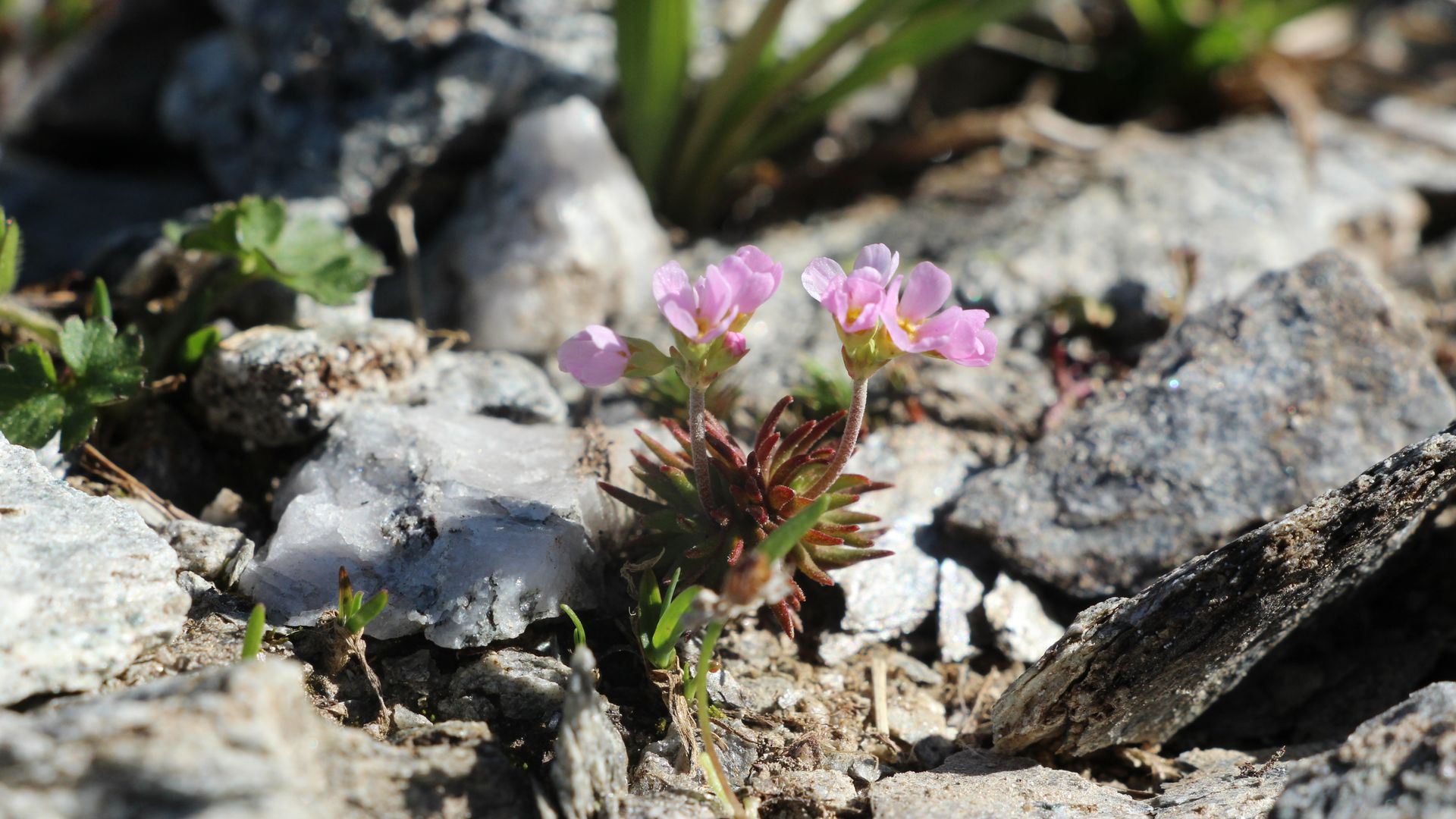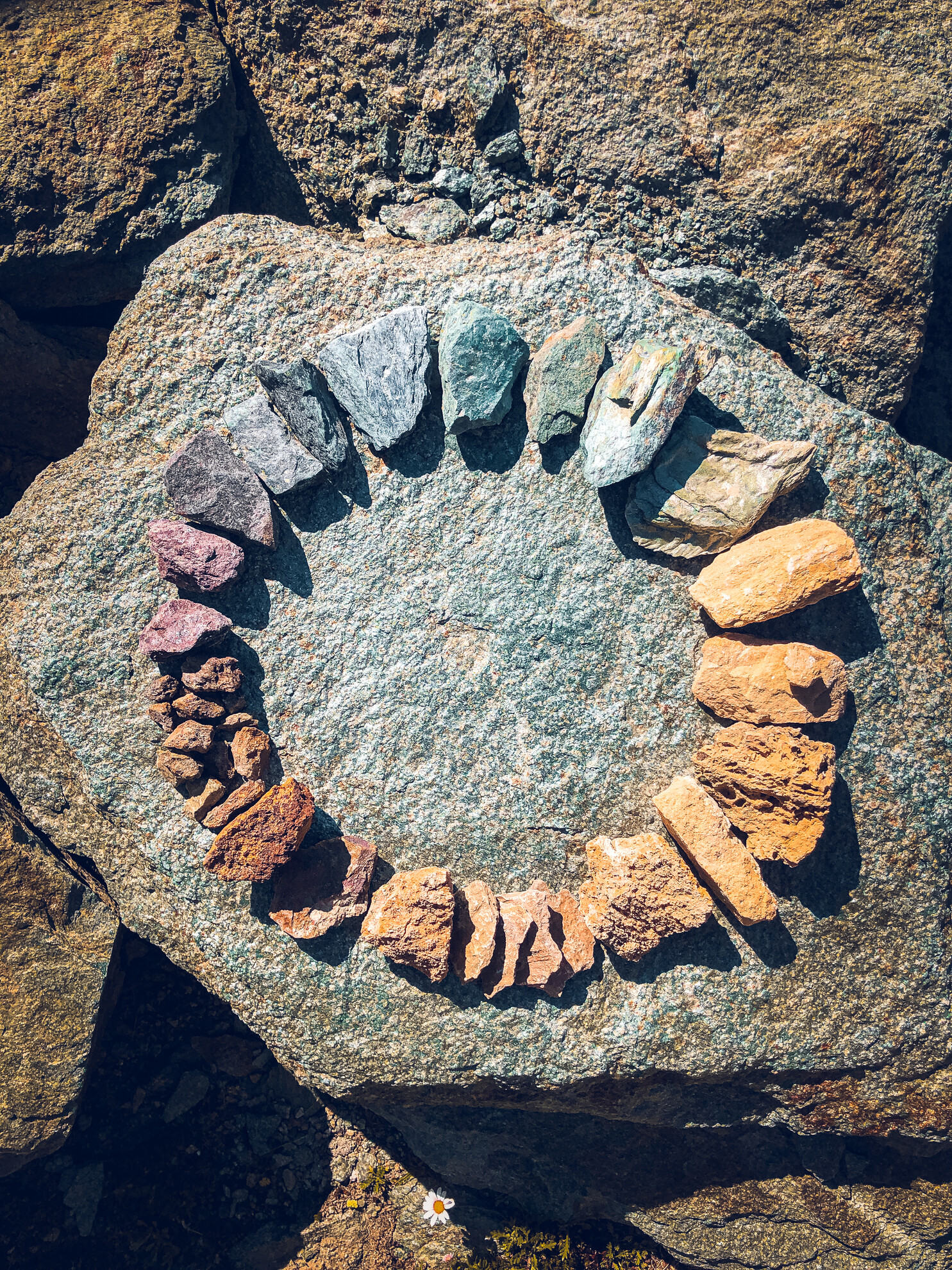The highest Alpine Garden in Europe
Explore the most spectacular natural setting in Europe: the breathtaking Alpine Garden on the Gornergrat!
The Gornergrat Alpine Garden is perched at around 2,800 meters above sea level near the Rotenboden station, offering a breathtaking view— the Matterhorn, Riffelhorn, and Riffelsee seem almost within reach. Spanning more than 5,000 square meters, adventurers and nature lovers can explore the remarkable flora and vegetation of the Gornergrat. The flowers here bloom only for a short period, from around July to August, appearing not in lush abundance but as scattered, enchanting alpine blossoms, including some rare and endangered species.
Enjoy blooming flowers year-round with Augmented Reality!
With this innovative technology, you can experience our flowers virtually anytime and anywhere. Augmented Reality (AR) makes this possible by overlaying digital content like 3D models onto the real world when you view it through your smartphone's camera. This allows you to bring the flowers directly into your living room and examine them in every detail, as if they were actually in front of you. This immersive experience lets you get up close and personal with the plants, no matter where you are.
All you need is your smartphone. Simply open the link to the flower you want to explore and dive into the stunning world of alpine flowers.
Discover the unique alpine flora at Gornergrat
The flora at Gornergrat is among the most diverse in the Swiss Alps and is unique due to its special location. Many plant species grow here at higher altitudes than in other comparable regions. In the Alpine Garden, you can explore the distinctive plant life of Gornergrat along a variety of scenic trails. Numerous signs with QR codes allow you to dive into the fascinating world of alpine plants and learn more about the flora.
Gardening at this altitude is difficult and the conditions for the plants are harsh. For this reason, visitors to the Alpine Garden can primarily see plants that occur naturally in this location. However, that still means a total of over 100 different species, which is another record-breaking number at this height. In the interests of sustainability, all additional plants come from the immediate environment.
Your Ticket to the Alpingarten
The Alpingarten is located directly at the Rotenboden station. If you are traveling to the Gornergrat to enjoy the unparalleled panorama, you can make a stop at the Alpingarten. With your return ticket, you can hop on and off at any station as you wish.
Rules of conduct
Plant life at 2,800 m.a.s.l. is hard and fragile. Many visitors also want to experience the feeling of strolling through a piece of paradise. We need your help to preserve this unique natural heritage and ensure it will delight many guests in years to come. Please observe the following rules:
Always stay on the paths – treading on the plants damages and destroys them
Do not pick plants in the Alpine Garden
Keep dogs on a leash and take children by the hand
Do not leave litter lying
Please do not touch the plants and signs
Larch and other upstarts – altitude records in the Alpine Garden
More than 200 years ago, Swiss botanist Horace-Bénédict de Saussure explored the Himalayas. At over 6,400 m.a.s.l., he discovered a Giant Scabiosa, which is the absolute altitude record for a plant to this day. From the Himalayas, the Giant Scabiosa has now also found its way into the Alpine Garden.
From an altitude of 3,000 m.a.s.l. and higher, summers in the Alps are too short, the climatic conditions too harsh and the solar radiation too high. The fact that plants grow in the Gornergrat region is an exception. Many species seem to feel at home here. Including the larch. In the Alpine Garden, it grows at an altitude of 2,800 m.a.s.l., which is a record-breaking occurrence for a tree in the Alps.
Location, climate and geology
With the wonderful view of the Matterhorn and the Gorner Glacier, a garden could hardly be more beautiful. It borders directly on an area belonging to the Federal Inventory of Landscapes and Natural Monuments (BLN). These BLN areas are considered to be the most valuable landscapes worthy of preservation in Switzerland and are subject to special protection.
Surrounded by 22 majestic four-thousand-metre peaks, the climate on the Gornergrat is particularly mild. The peaks protect against rain and the south-facing position ensures intense sunshine. Not surprisingly, the region is one of the sunniest areas in Switzerland.
If you go for a walk in the Alpine Garden, you will always discover a naturally occurring green rock. What many people don’t know is that it has its own flora with special and adapted species. Geologically, the Rotenboden area is very diverse – most rocks result in alkaline soil conditions, which is reflected in a rich limestone flora. For geologists and mineralogists, the Gornergrat is therefore an El Dorado for various rocks.


.jpg?fm=jpg&fl=progressive&fit=fill&q=45&w=1140)